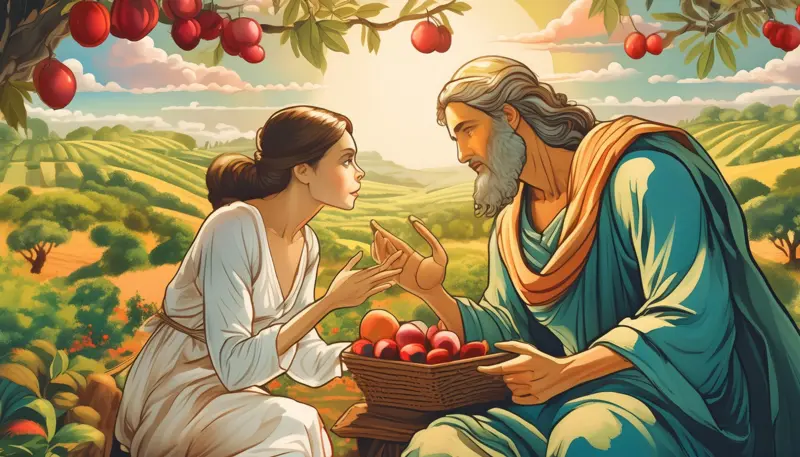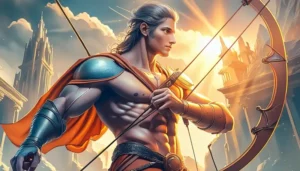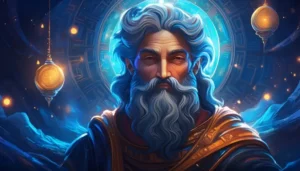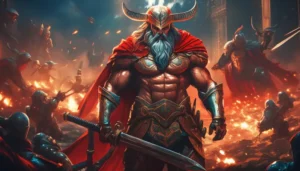The Creation of Adam: On the sixth day of creation, God had a very special plan. He wanted to make someone who could care for the Earth and all its creatures. So, God took some dust from the ground and carefully shaped it into a man. He breathed life into the man’s nostrils, and suddenly, the man opened his eyes and smiled.
God named this first man Adam. He was strong and handsome, with bright eyes and a kind heart. God placed Adam in the Garden of Eden, a paradise filled with lush plants, sparkling rivers, and delicious fruits.
A Helper for Adam
God saw that Adam was happy, but he also noticed that Adam was alone. God said, “It’s not good for man to be alone. I will make a helper suitable for him.”
While Adam slept, God took one of his ribs and used it to create a woman. When Adam woke up, he was overjoyed to see the woman standing beside him. Her name was Eve, and she was the perfect companion for Adam.
Living in Paradise
Together, Adam and Eve lived in the Garden of Eden, caring for the animals and enjoying all the wonders God had made. They could eat any fruit in the garden, except for one special tree—the tree of the knowledge of good and evil. God told them not to eat from this tree, or they would be disobedient and have to leave the garden.
A Tempting Choice
One day, a sly serpent came along and tempted Eve to eat the forbidden fruit. Eve gave some to Adam, and they both ate it. Immediately, they realized they had done something wrong. They felt ashamed and tried to hide from God.

Leaving the Garden
God knew what Adam and Eve had done, and He was sad. Because they had disobeyed, they could no longer live in the Garden of Eden. God sent them out of the garden and into the world, where they would have to work hard for their food and face challenges.
A New Beginning: the creation of Adam
Even though Adam and Eve made a mistake, God still loved them. He promised that one day, a Savior would come to rescue them from their sin and bring them back to Him. This promise gave Adam and Eve hope as they started their new life outside the garden.
Moral of the Story: The Creation of Adam
We all make mistakes, but God loves us anyway. He is always willing to forgive us and give us a fresh start.
In Summary: The Creation of Adam
God created Adam from the dust of the ground and Eve from Adam’s rib. They lived happily in the Garden of Eden until they disobeyed God by eating the forbidden fruit. As a result, they had to leave the garden, but God promised to send a Savior to rescue them.
Read: Bible Stories for Kids
What does the creation of Adam depict?
The creation of Adam depicts the biblical account of God creating the first human, Adam. It symbolizes several key concepts:
- Divine Creation: The story highlights God’s power and authority as the ultimate creator of all life. It emphasizes that humans are made in God’s image, a unique and special creation.
- Life’s Breath: God breathing life into Adam symbolizes the divine spark that animates humans and sets them apart from other creatures. It represents the soul or spirit that gives us consciousness and the ability to connect with the divine.
- Humanity’s Purpose: Adam’s placement in the Garden of Eden suggests that humans were created to care for and cultivate the Earth. It also highlights the importance of obedience to God and the consequences of disobedience.
- Human Relationships: The creation of Eve from Adam’s rib emphasizes the importance of companionship and the idea that men and women are meant to complement and support each other.
- The Fall of Man: The story foreshadows the fall of humanity, as Adam and Eve eventually disobey God and are expelled from the Garden of Eden. This introduces the concepts of sin, temptation, and the need for redemption.
The creation of Adam is a foundational story in Abrahamic religions, shaping our understanding of human origins, purpose, and relationship with God. It continues to inspire countless works of art, literature, and theological reflection.
What do the different elements in the creation of Adam represent?
The creation of Adam, especially as depicted in Michelangelo’s famous painting, is rich with symbolism. The different elements represent various theological and philosophical concepts:
- Adam: Represents humanity, the first man, and the potential for both good and evil. His reclining posture suggests a state of dormancy or incompleteness, awaiting the divine spark.
- God: Depicted as an elderly, powerful figure, enveloped in a flowing cloak. He symbolizes the creative force of the universe, the source of life and energy. His outstretched arm signifies the act of bestowing life and consciousness.
- The Divine Spark: The almost-touching fingers of God and Adam represent the transmission of the divine spark, the soul or life force that animates humans and connects them to the divine.
- The Womb-Like Shape: Some interpretations suggest the shape formed by God and the surrounding figures resembles a womb and placenta. This could symbolize the birth of humanity and God’s nurturing role as a parent.
- The Cloak: The flowing cloak around God is often interpreted as representing the human brain, suggesting the intelligence and consciousness that God imparts to Adam.
- The Figures Within the Cloak: The figures surrounding God are thought to represent angels or possibly Eve, who is yet to be created. This could symbolize the divine council or the potential for future generations.
- The Green Scarf: The green scarf flowing beneath God is often interpreted as representing the umbilical cord, further emphasizing the birth imagery.
- The Landscape: The barren landscape behind Adam might symbolize the unformed world awaiting human cultivation and care.
Overall, the creation of Adam represents the moment of divine inspiration and the bestowal of life, intelligence, and potential upon humanity. It’s a powerful reminder of our connection to the divine and our responsibility to care for the world and each other.
How does Michelangelo emphasize that god made Adam in his own image in the creation of Adam?
Michelangelo masterfully emphasizes the idea that God made Adam in His own image in his iconic “The Creation of Adam” fresco through several visual techniques:
- Mirroring Poses: God and Adam are depicted in almost mirror-image poses, both reclining and extending their arms towards each other. This mirroring emphasizes their physical similarity and suggests a shared divine essence.
- Physical Attributes: Both figures share similar proportions, musculature, and idealized beauty. God is more mature and powerful, while Adam is youthful and receptive, but their underlying similarity is clear.
- The Spark of Life: The central focus of the painting is the almost-touching fingertips of God and Adam. This signifies the transmission of the divine spark, the life force or soul that makes Adam a living being in God’s image.
- Surrounding Figures: The figures surrounding God, often interpreted as angels or Eve, are also depicted with similar idealized forms. This suggests that the divine image extends beyond Adam to all of creation.
- Intellectual Connection: Some interpretations suggest that the shape formed by God and the surrounding figures resembles a human brain. This could symbolize the divine intellect being imparted to Adam, emphasizing the shared mental and spiritual capacities.
- The Gaze: God’s gaze is directed intently at Adam, while Adam looks back with awe and yearning. This visual connection reinforces the idea of a close relationship between creator and creation.
Through these artistic choices, Michelangelo visually conveys the theological concept that humans are uniquely created in God’s image, sharing not only physical resemblance but also intellectual and spiritual attributes. This emphasis on the divine spark and shared essence elevates humanity’s status and underscores the importance of our relationship with the divine.
Where is the creation of Adam located?
The Creation of Adam” by Michelangelo is located on the ceiling of the Sistine Chapel in Vatican City. It is one of the most famous frescoes in the world and a masterpiece of Renaissance art.








